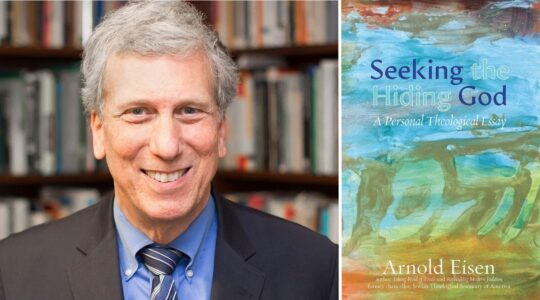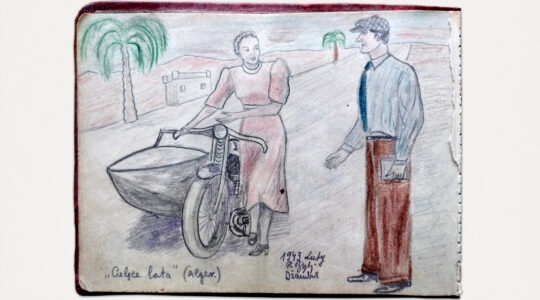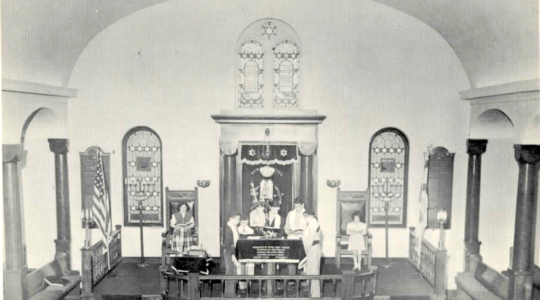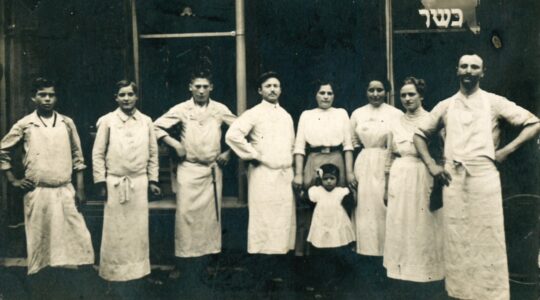To the Editor:
Thank you for Hillel Kuttler’s article, "Seeking Kin: Man hidden as baby hopes to honor father-rescuer." It is especially timely given that March 24, 2012 marks the 70th anniversary of the first deportations of Jews to Auschwitz, which began in Poprad, Slovakia, just a few miles from Kezmarok, where Peter Nürnberger grew up. As Slovak-American Jews and descendants of Holocaust survivors and victims from Slovakia, we owe our lives to brave non-Jewish Slovaks, clergy and laypeople who protected our grandparents and parents (Shawn’s mother is a child survivor from Bratislava).
However, we are troubled by the claims attributed to USHMM senior historian Peter Black and concerned that his comments may have been misinterpreted. We are certain that Dr. Black would agree that it is inaccurate to say that "it only became dangerous in Slovakia [beginning] in August 1944," when most Slovak Jews had been murdered by then. Zuzana’s great-aunt was deported on that first March 24 Poprad transport and was murdered in Auschwitz; Zuzana’s grandparents were interned in Sered and Novaky. Shawn’s grandfather was forced to flee by the Hlinka Guard in 1939, and his mother and grandmother followed in 1940. His great-grandmother and great-uncles were deported and murdered in October 1942.
So Slovakia was a very dangerous place for Jews beginning in 1939. Although deportations were suspended between October 1942 and August 1944, it was not because, as the reporter paraphrased Dr. Black, "the Slovakian government of Jozef Tiso cooperated with the Nazis’ deportation orders, but ceased doing so after learning that the trains were traveling to death camps, not labor camps." As Dr. Black surely knows, the truth is otherwise.
Objections to the deportations were raised to the Tiso government by members of the Slovak parliament concerned about their negative effect on the Slovak economy, by certain Vatican representatives, and by Jewish leaders themselves. Although the official reason given for the halt in October 1942 was the economic disruption caused by the deportations, the real reason appears to be a combination of bribes paid by the Working Group (led by Gisi Fleischmann and Rabbi Chaim Michael Dov Weissmandl) to Slovak officials and to Dieter Wisliceny, the Nazi SS representative in Bratislava. An excellent account of the story is available in the three-part documentary series "Among Blind Fools" (Petr Bok and Martin Smok, 1998).
The post-socialist Slovak Republic has made great strides in coming to terms with its wartime past, although there are those who continue to try to whitewash the Tiso regime. Today there is an official Slovak Jewish Heritage Route (www.slovak-jewish-heritage.org/) and, more joyously, our own Facebook walls are filled with ever more photographs from Bratislava, Kosice, Banska Bystrica and beyond chronicling the lives of our friends and their many young children who are building a small but vibrant Jewish community there.
Shawn Landres
Zuzana Riemer Landres
Santa Monica, Calif.

Help ensure Jewish news remains accessible to all. Your donation to the Jewish Telegraphic Agency powers the trusted journalism that has connected Jewish communities worldwide for more than 100 years. With your help, JTA can continue to deliver vital news and insights. Donate today.





